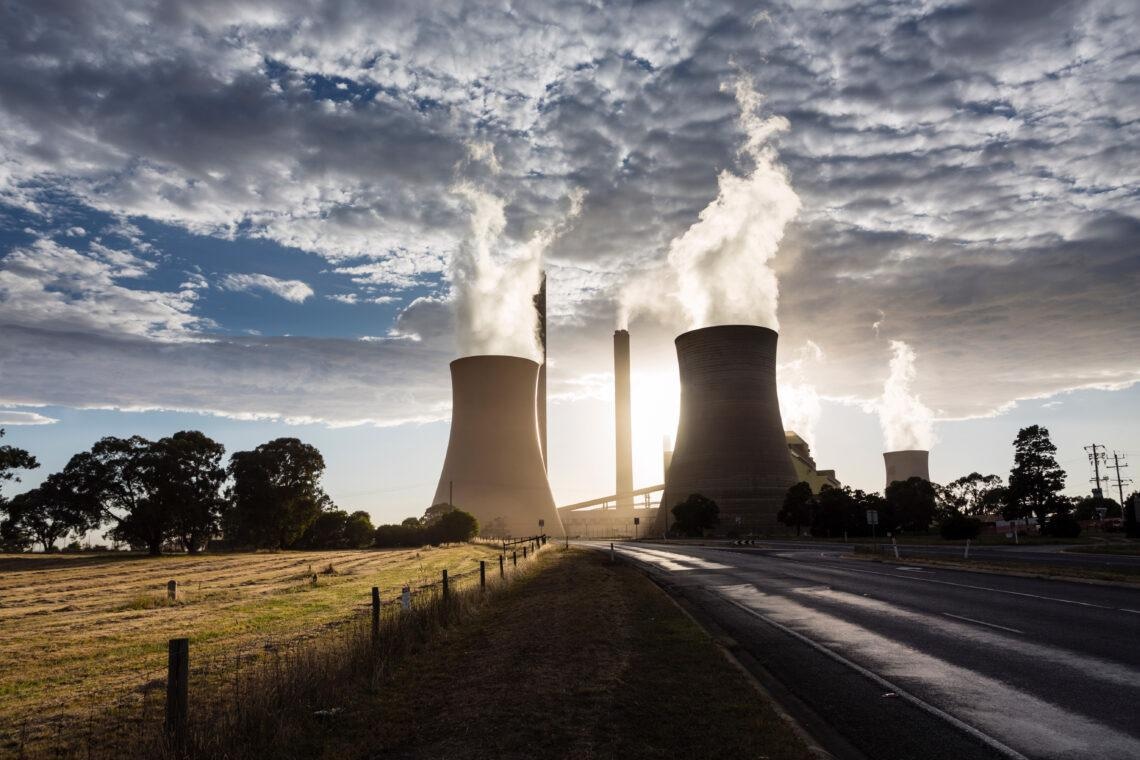Countries across the globe have pledged in the Paris Agreement to restrict warming to 1.5 °C, or, at the most, 2 °C.
 The coal-fired power plant shown here emits not only carbon dioxide but also nitrogen dioxides and particulates. Including more types of emissions increases the amount of warming that human have committed to by past emissions. Image Credit: University of Washington.
The coal-fired power plant shown here emits not only carbon dioxide but also nitrogen dioxides and particulates. Including more types of emissions increases the amount of warming that human have committed to by past emissions. Image Credit: University of Washington.
As emissions rates slowly begin to decline, countries are considering how many greenhouse gases could still be released while remaining under these temperature targets. These are the upper limits to prevent the most catastrophic effects on the climate system.
A new study headed by the University of Washington evaluates how much warming is earlier ensured by past emissions. While early studies have explored this question for carbon dioxide, the new study includes related emissions like nitrogen oxide, methane, and aerosols, like soot or sulfur.
Under a moderate future emissions scenario, by 2029 the planet has a two-thirds chance of temporarily exceeding warming of 1.5 degrees Celsius, even if all emissions cease on that date, as per the study findings.
If humans remain on a moderate emissions pathway, by 2057, there is a two-thirds a chance that the planet will at least temporarily surpass warming of 2 °C.
The study was reported in the Nature Climate Change on June 6th, 2022.
It’s important for us to look at how much future global warming can be avoided by our actions and policies, and how much warming is inevitable because of past emissions. I think that hasn’t been clearly disentangled before – how much future warming will occur just based on what we’ve already emitted.
Michelle Dvorak, Study Lead Author and Doctoral Student, Oceanography, University of Washington
A climate model was utilized by the authors to study what would happen to Earth’s temperature if all emissions were to abruptly halt in each year from 2021 to 2080, along eight various emissions pathways.
While it is not realistic to immediately turn off all human-generated emissions, the authors state that it is an absolute so-called “best-case scenario” that fixes a lower limit for warming that would happen in the future.
Previous similar studies observed emissions of carbon dioxide and discovered little to no “warming in the pipeline” as soon as emissions cease. But the new study consists of shorter-lived greenhouse gases, like nitrogen oxide and methane, as well as particulate pollution like soot and sulfur.
Various emissions can either warm or cool the planet. Particulate pollution reflects sunlight, and it has a slight cooling effect, thereby offsetting global warming. Such particles clarify the air much quicker compared to the heat-trapping greenhouse gases.
Halting all human emissions at the same time can hence produce a temporary bump of nearly 0.2 °C that begins suddenly while emissions stop and last for nearly two decades.
This paper looks at the temporary warming that can’t be avoided, and that’s important if you think about components of the climate system that respond quickly to global temperature changes, including Arctic sea ice, extreme events such as heat waves or floods, and many ecosystems. Our study found that in all cases, we are committed by past emissions to reaching peak temperatures about five to 10 years before we experience them.
Kyle Armour, Study Co-Author and Associate Professor, Atmospheric Sciences and of Oceanography, University of Washington
The study finds that if countries wish to achieve their goals of staying below 2 °C of warming, then the full amount of carbon that humans could continue to meet, the leftover so-called “carbon budget,” is considerably smaller compared to early estimates.
Our findings make it all the more pressing that we need to rapidly reduce emissions.
Michelle Dvorak, Study Lead Author and Doctoral Student, Oceanography, University of Washington
The other co-authors of the study are Dargan Frierson and Marcia Baker at the UW; Cristian Proistosescu at the University of Illinois at Urbana-Champaign; and Chris Smith at the University of Leeds.
The study was financially supported by the National Science Foundation, the National Oceanographic and Atmospheric Administration, the Alfred P. Sloan Foundation, and the U.K. Natural Environment Research Council.
Journal Reference:
Dvorak, M. T., et al. (2022) Estimating the timing of geophysical commitment to 1.5 and 2.0 °C of global warming. Nature Climate Change. doi.org/10.1038/s41558-022-01372-y.